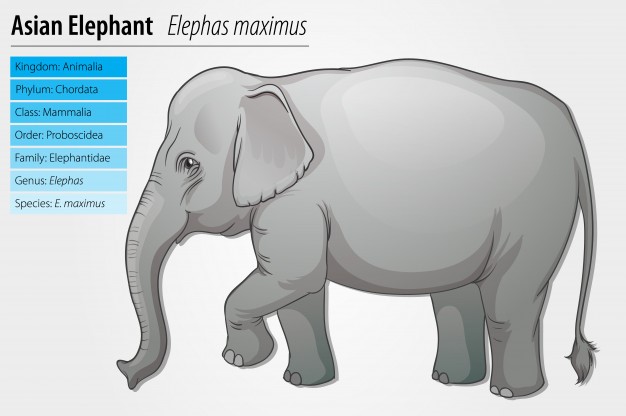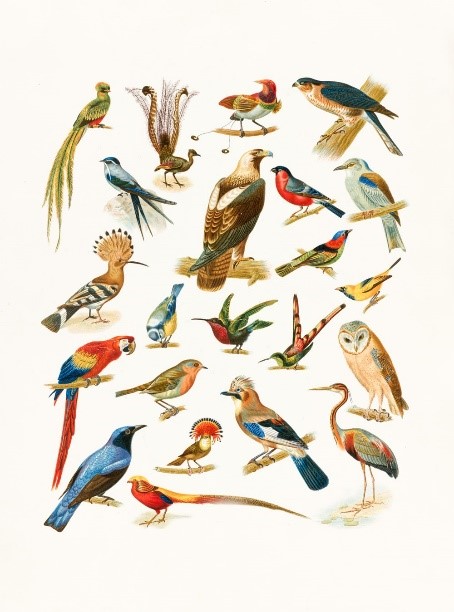Classification of Organisms
Grade 6 Science Worksheets
What is Taxonomy?
We, humans, share our planet with as many as 8.7 million other forms of life! Scientists estimate at least 6.5 million different forms of life on land and about 2.2 million different forms of life in the oceans. How do we keep track of all this diversity?
This wide variety and richness in diversity of all living things – plants and animals, micro-organisms, and more – required scientists to arrange them all into related groups. This science of classification of all living organisms is termed Taxonomy. Taxonomy ensures that each living thing has exactly one correct scientific name. These scientific names are mostly Greek or Latin in their origin. For example, in our daily lives, we may call a particular animal a horse but in the scientific classification a common horse would be termed as “Equus caballus”. What we eat as cabbage would be “Brassica oleracea” to a taxonomy scientist.
Schedule a Free session to clear worksheet doubts
No credit card required, no obligation to purchase.
Just schedule a FREE Sessions to meet a tutor and get help on any topic you want!
How are Living Things Classified?
Humans have attempted to classify the rich diversity of life since the time of Aristotle, who believed that nature could only be understood through observation, analysis, and classification. Modern classification in use today has its roots in the 1700s with the work of Carl Linnaeus and many other scientists.

Based on this modern classification, all living things are classified based on these eight groupings –
- Domains (the largest grouping)
- Kingdom
- Phylum or Division
- Class
- Order
- Family
- Genus
- Species (the smallest grouping)
Personalized Online Tutoring from eTutorWorld
eTutorWorld offers affordable one-on-one live tutoring over the web for Grades K-12, Test Prep help for Standardized tests like SCAT, CogAT, MAP, SSAT, SAT, ACT, ISEE and AP. You may schedule online tutoring lessons at your personal scheduled times, all with a Money-Back Guarantee. The first one-on-one online tutoring lesson is always FREE, no purchase obligation, no credit card required.
For answers/solutions to any question or to learn concepts, take a FREE TRIAL Session.
No credit card required, no obligation to purchase.
Just schedule a FREE Sessions to meet a tutor and get help on any topic you want!
1. Domain
At the very highest level, all living things are grouped into three domains –
- Archaea – which are ancient microbes
- Eubacteria – which are more advanced microbes
- Eukarya – all other life forms including plants and animals
In most of our daily lives, we are concerned with the third domain only.
2. Kingdom
There are two major kingdoms – Animal Kingdom and the Plant Kingdom. Four other kingdoms were later added for micro-organisms, such as various kinds of fungi, bacteria, molds, and algae.

3. Phylum, Class, Order
Classifications under Kingdom follow strictly known facts and similarities about the organisms to group them further. For example, all animals with backbones belong to the phylum Chordata. Within Chordata, animals such as apes, bears, and even humans, having hair on their body, belong to a different class, Mammalia, whereas snakes, lizards, and turtles, which have scales on their body belong to class Reptilia. Mammals that eat flesh are considered of the OrderCarnivore.Other mammals such as those that eat insects are classified in the order Insectivore.
The plant kingdom like wise has its own classification, with flowering plants having a different phylum than non-flowering plants. And so on.
4. Genus and Species
The Genus and the Species together uniquely identify any living organism in the natural world.For example, the plant genus Rosa contains more than a hundred different species of roses. Both zebras and horses belong to the same genus Equus.
Typically, any living organism can be uniquely identified simply by its genus and species, known as its Binomial Scientific Name. For example, Felis Catus is the binomial scientific name for the domestic cat.
Just about 1.3 million species have been cataloged in this manner till date. New species are being discovered and classified even to this day!

Check Point
- The scientific classification of all living things is called ______.
- Classifications follow strictly known _____ and _____ about the organisms.
- In the scientific grouping, Order is preceded by _____ and followed by ______.
- The two major Kingdoms are ______ and ______.
- A living organism may be uniquely identified by its ______ and ______ which together are its _____.
Answer Key
- Taxonomy
- Facts, Similarities
- Class, Family
- Animal, Plant
- Genus, Species, Binomial Scientific Name
Schedule a Free session to clear worksheet doubts
No credit card required, no obligation to purchase.
Just schedule a FREE Sessions to meet a tutor and get help on any topic you want!
Learn more about Scientific Method and other important topics with 7th Grade Science Tutoring at eTutorWorld. Our expert science tutors break down the topics through interactive one-to-one sessions. We also offer the advantage of customized lesson plans, flexible schedules and convenience of learning from home.
Pricing for Online Tutoring
| Tutoring Package | Validity | Grade (1-12), College |
|---|---|---|
| 5 sessions | 1 Month | $124 |
| 1 session | 1 Month | $25 |
| 10 sessions | 3 months | $239 |
| 15 sessions | 3 months | $354 |
| 20 sessions | 4 months | $449 |
| 50 sessions | 6 months | $1049 |
| 100 sessions | 12 months | $2049 |
6th Grade Free Worksheets
- Inquiry process
- Nature of Science
- Scientific Inquiry
- Inquiry, Analysis and Problem Solving
- Ethical Practices
- Science and Society
- Biotic and Abiotic Factors
- Impact of Organisms
- Adaptation
- Spheres of Earth
- Natural Resources
- Environmental Issues
- Conservation of Earth
- Understanding Technology
- Abilities To Do Technological Design
- Structure of Earth
- Solar System
- Rocks and Fossils
- Earth Systems
- Plate Tectonics
- Evolution
- Magnetic Field of Earth
- Geologic Time
- Materials and Processes That Shape a Planet
- Astronomy
- Ecology
- Energy
- Kinetic and Potential Energy
- Energy Transfer
- Matter and its Structure
- States of Matter
- Physical and Chemical Changes
- Force and Motion
- Electricity and Magnetism
- Wave Interactions
- Sound
- Light
- Introduction to Life Science
- The Origin & History of Life On Earth
- Plant and Animal Cells
- Parts of a Cell
- The Cell Cycle
- How Living Organisms Get Energy
- Classification of Organisms
- How Plants Grow & Reproduce
- The Human Respiratory System
- The Human Cardiovascular System
- The Human Digestive System
- The Human Endocrine Systems
- The Human Nervous System
- The Human Muscular System
- The Human Skeletal System
Images Credit:
https://image.freepik.com/free-vector/asian-elephant-template_1308-34642.jpg
https://images.unsplash.com/photo-1579762714453-51d9913984e2?ixlib=rb-1.2.1&ixid=eyJhcHBfaWQiOjEyMDd9&auto=format&fit=crop&w=671&q=80


